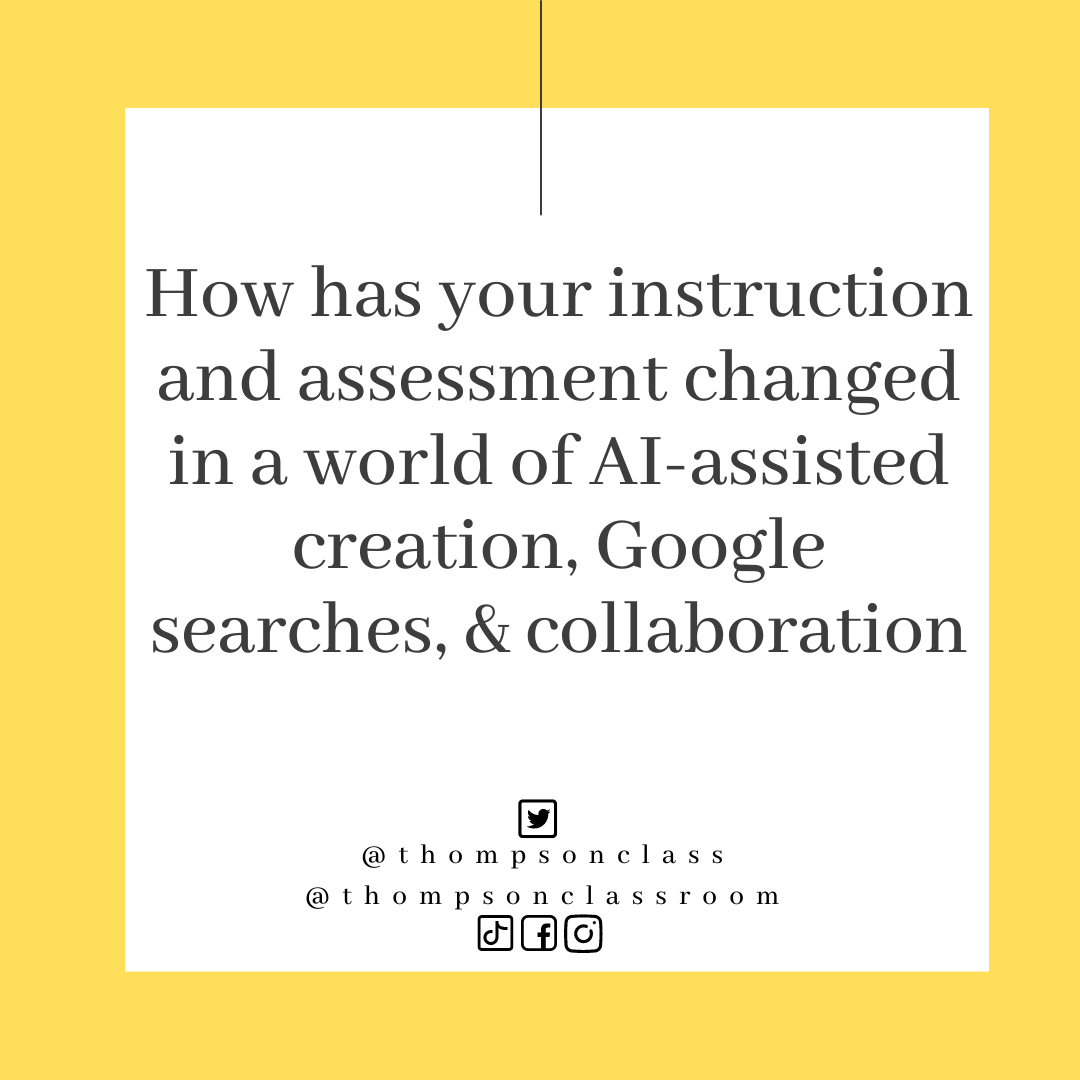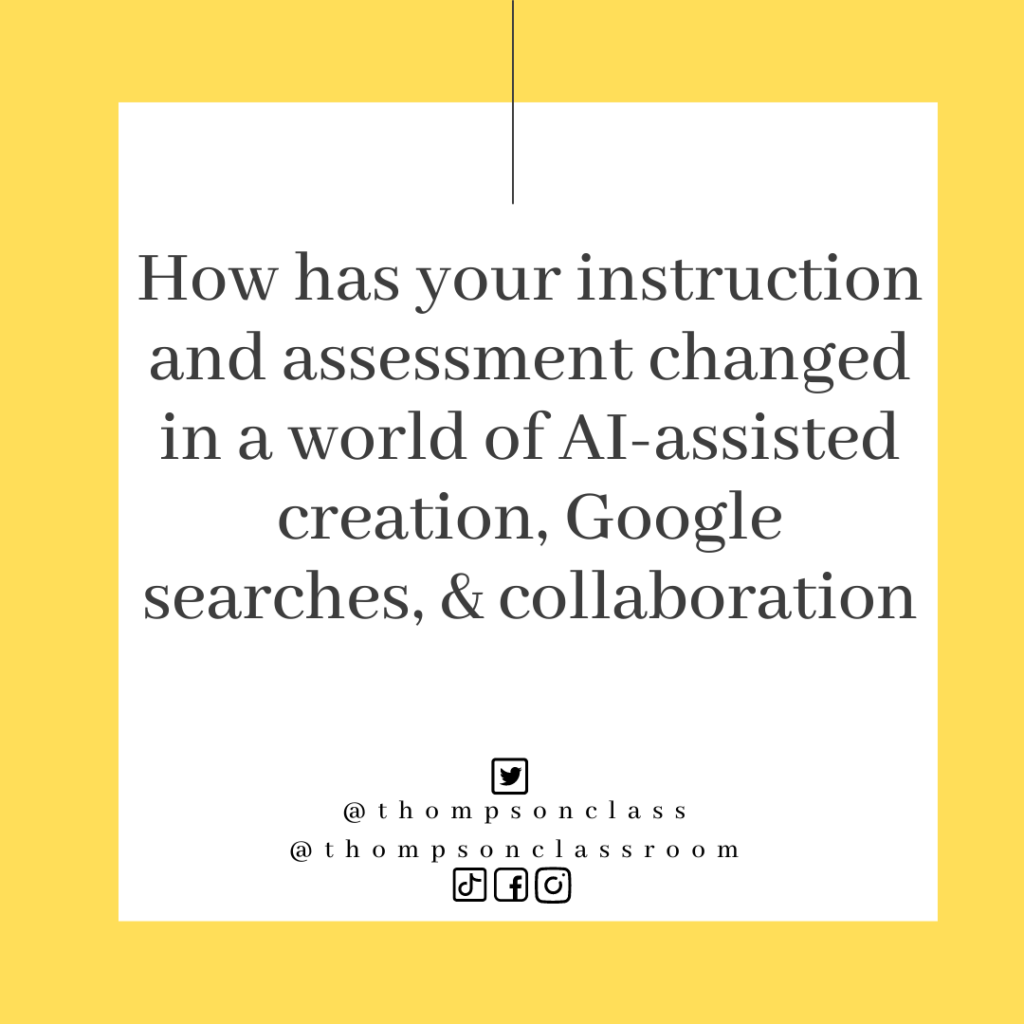Assessment in the Age of AI

Every Monday I share a different ed tech quote on our Thompson Classroom social media pages for our staff to consider.

I don’t know about you but AI-assisted content creation programs are ALL over my online feeds this past month. The big one was Chat GPT (which I wrote about last week) and now the Magic Writing feature within Canva. Understandably, the education world is now trying to find where these programs fit within their current model. So what do you need to know?
What are AI-Assisted Programs
Programs such as Chat GPT, Canva – Magic Writing, Dall E-2, etc can be used to create text and visuals through the use of artificial intelligence (AI). These types of programs work by using machine learning algorithms to analyze large amounts of text and visual data to generate new content based on patterns and structures it has learned from the data. The result is a unique piece of work that, while pulled from data found online, is one-of-a-kind and undetectable through programs used by educators to catch plagiarism.
For teachers who assign traditional written responses for grades, Chat GPT and other AI text generation technologies may present both opportunities and challenges. On one hand, these technologies could provide a framework for understanding and assist users in the foundation of their work. However, it is important to be aware that AI text generation technologies are not yet able to fully replicate the nuanced and complex thinking that is required for high-quality academic writing and, without support, students may feel that these programs can be used in isolation to reduce the amount of work they are personally completing.
In the face of increased access to AI-assisted content programs, educators need to model the pros and cons of these tools with their students and be explicit about the types of skills and knowledge that they are looking for in student work. This can help to ensure that students understand what is expected of them, where these types of programs could play a role (if applicable), and can focus on developing the appropriate skills and knowledge.
Benefits of AI-Assisted Assessment
The use of artificial intelligence (AI) in student assessment is a growing trend in education. There are a variety of ways that AI can be used to assess student learning, including through the use of adaptive learning software, automated grading systems, and educational games that incorporate AI.
One way that AI can be used in student assessment is through the use of adaptive learning software. This type of software adjusts the difficulty of content based on a student’s performance, allowing the student to progress at their own pace. Adaptive learning software can be used to assess student learning in real-time and provide personalized feedback to help students improve their understanding of the material.
Another way that AI is being used in student assessment is through the use of automated grading systems like what can be done through Microsoft Forms. These systems use algorithms to analyze student work and provide grades based on pre-determined criteria. Automated grading systems can be used to grade a variety of assignments, including essays, math problems, and coding projects.
Educational games that incorporate AI are also being used as a way to assess student learning. These games can adapt to a student’s progress and provide personalized feedback to help students improve their understanding of the material.
Overall, the use of AI in student assessment is still a developing field, and there are both advantages and potential limitations to consider. It is important for users to carefully consider how they use AI in their programming to ensure that they are using it in a way that supports student learning and development.
3 thoughts on “Assessment in the Age of AI”